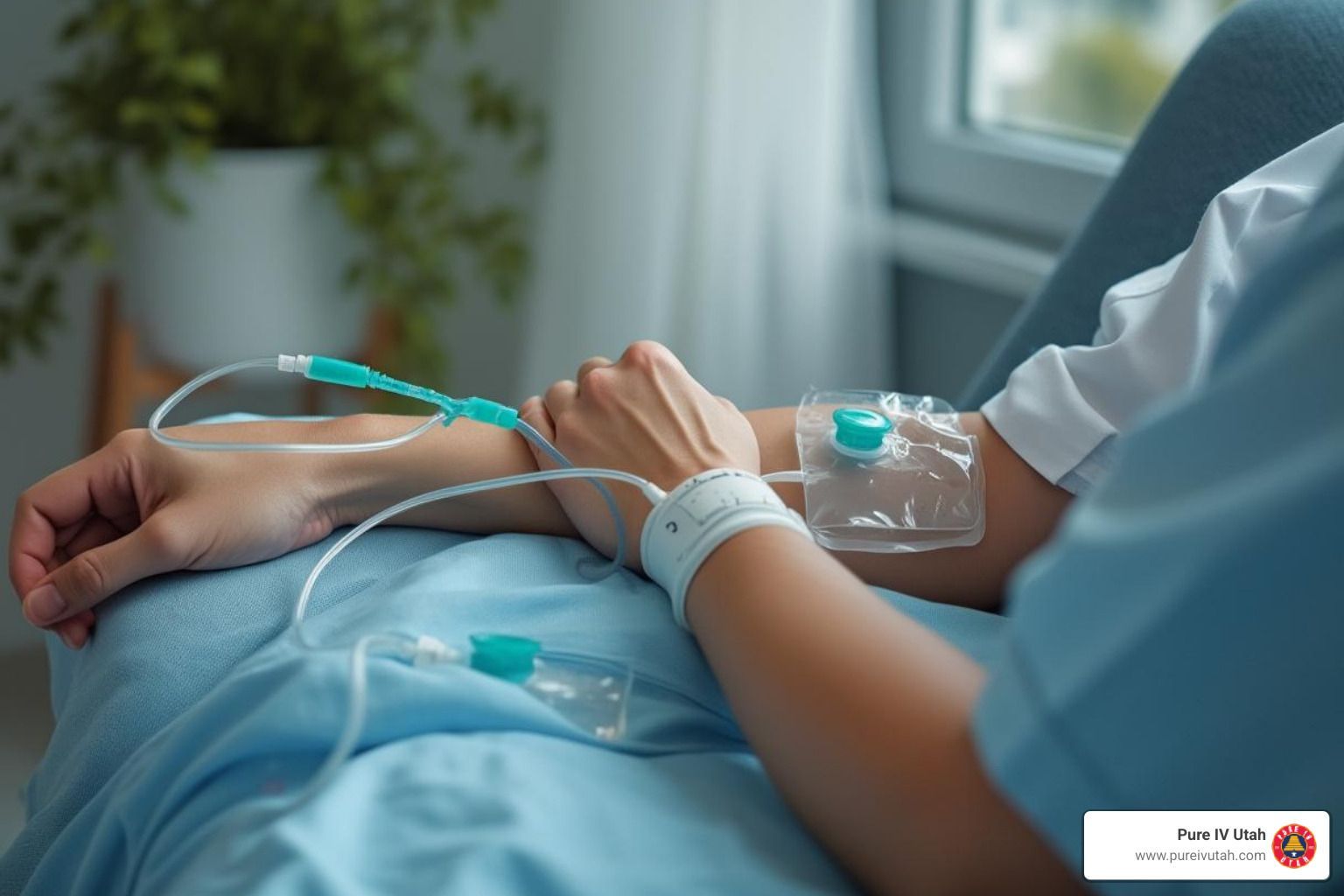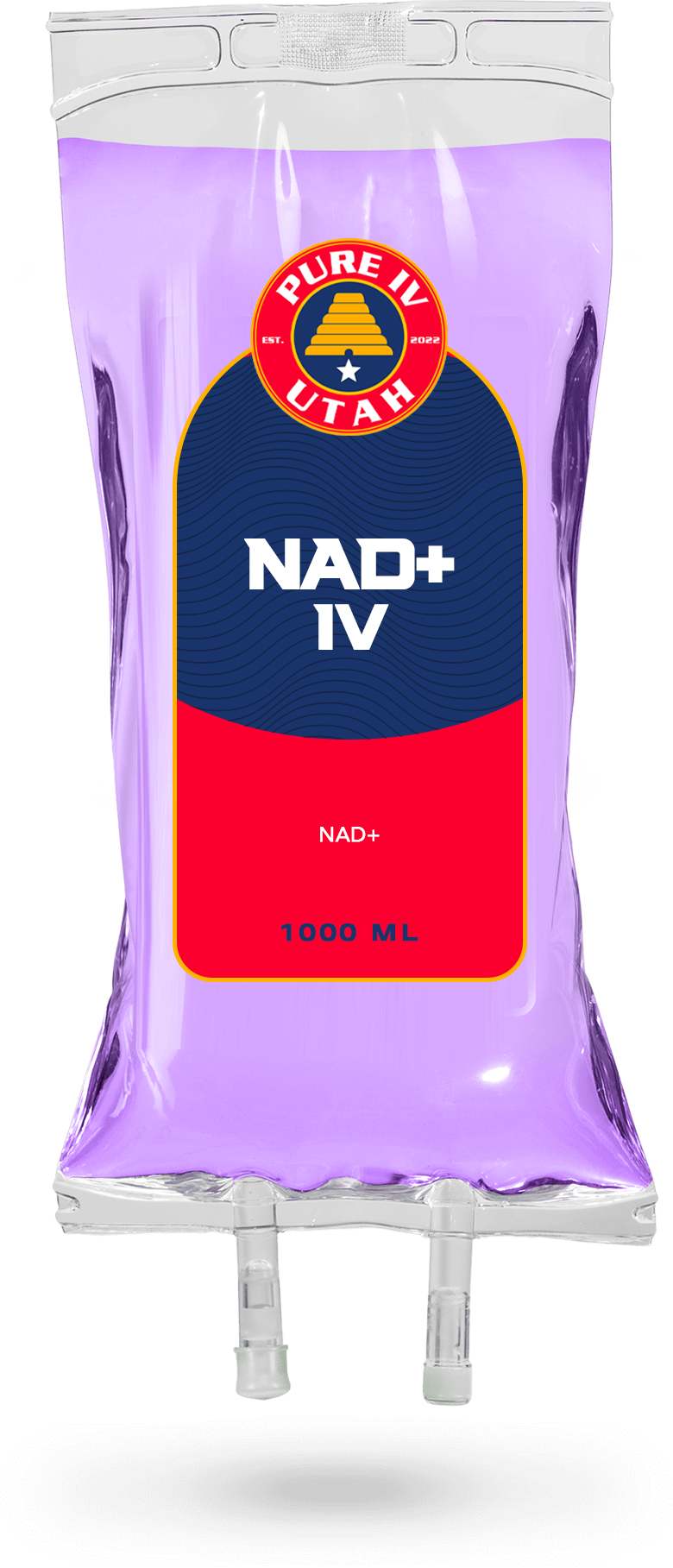Bronchitis Recovery with Mobile IV Therapy: Fast, At-Home Relief

Medically reviewed by Micaela Strevay, FNP-C, PMHNP-BC
Joseph Lopez • December 16, 2024
Table of Contents

Bronchitis is a respiratory condition that can cause significant discomfort and difficulty in breathing. As healthcare continues to evolve, innovative treatments like mobile IV therapy are becoming more popular for managing conditions such as bronchitis. This article delves into bronchitis, its symptoms, the working of mobile IV therapy, and how it can aid in recovery.
Understanding Bronchitis: Causes and Symptoms
Bronchitis is an inflammation of the bronchial tubes, which carry air to and from the lungs. There are two main types: acute bronchitis and chronic bronchitis. Acute bronchitis often follows a cold or respiratory infection, whereas chronic bronchitis is a more serious condition usually caused by long-term irritants like smoking or air pollution. Acute bronchitis typically resolves within a few weeks, while chronic bronchitis can persist for months or even years, significantly impacting quality of life.
The Role of the Respiratory System in Bronchitis
The respiratory system plays a vital role in our overall health, facilitating the exchange of oxygen and carbon dioxide. When bronchitis occurs, the bronchial tubes become swollen and inflamed, leading to increased mucus production. This can hinder airflow, causing symptoms like coughing, wheezing, and shortness of breath. The inflammation can also make the lungs more susceptible to infections, further complicating recovery and potentially leading to conditions like pneumonia if not addressed promptly.
Identifying the Early Signs of Bronchitis
Early detection of bronchitis is crucial for effective treatment. Recognizing the symptoms can help individuals seek timely medical assistance. Common early signs include:
- Persistent cough that produces mucus.
- Fatigue and general malaise.
- Wheezing or a whistling sound when breathing.
- Low fever, in some cases.
If these symptoms persist for more than a few days, it is essential to consult a healthcare professional for a proper diagnosis and treatment plan. In addition to these symptoms, individuals may experience chest discomfort or tightness, which can be alarming and may require immediate attention. Understanding the risk factors, such as exposure to tobacco smoke, dust, or chemical fumes, can also help individuals take preventive measures to protect their respiratory health.
Moreover, lifestyle choices play a significant role in managing bronchitis. Staying hydrated can thin mucus, making it easier to expel, while avoiding irritants like smoke and strong odors can help reduce inflammation. Incorporating a balanced diet rich in antioxidants, such as fruits and vegetables, may also support the immune system, aiding in recovery. Regular exercise, when feasible, can enhance lung function and overall well-being, although it is important to consult a healthcare provider before starting any new exercise regimen, especially for those with existing respiratory conditions.
The Science Behind Mobile IV Therapy
Mobile IV therapy involves administering intravenous fluids and nutrients directly into the bloodstream, providing immediate hydration and essential vitamins. This method can effectively support the immune system and promote recovery from various health conditions, including bronchitis.
The Basics of Intravenous Therapy
Intravenous therapy (IV therapy) is a medical technique that delivers fluids, electrolytes, and medications directly into a patient's bloodstream through a vein. This method allows the body to absorb nutrients rapidly, making it a preferred option for individuals with respiratory conditions like bronchitis, where maintaining hydration and nutrient levels is critical.
The Benefits of Mobile IV Therapy
Mobile IV therapy offers several advantages, particularly for patients struggling with bronchitis:
- Convenience: Treatments are administered in the comfort of the patient's home, eliminating the need for hospital visits.
- Rapid Relief: IV therapy can quickly replenish fluids and electrolytes, leading to faster symptom relief.
- Personalized Care: Each IV therapy session can be tailored to meet the patient's specific health needs.
These benefits can significantly enhance the treatment experience for individuals battling bronchitis.
Mobile IV Therapy for Bronchitis: How Does It Work?
Mobile IV therapy is strategically designed to address the unique needs of bronchitis patients. The treatment involves several key steps that ensure effective administration and optimal recovery.
The Process of Administering IV Therapy for Bronchitis
The first step is a consultation with a qualified healthcare provider who will assess the patient's condition. After evaluating symptoms, a customized IV therapy plan is created. The provider will then:
- Set up a mobile IV unit at the patient's location.
- Insert a small IV catheter into a vein, typically in the arm.
- Administer the IV fluids, which may include saline, vitamins, and electrolytes.
The entire process usually takes between 30 to 60 minutes, during which patients can relax and recuperate.
The Role of Hydration and Nutrients in Treating Bronchitis
Hydration and nutrient intake are crucial for recovery from bronchitis. Mobile IV therapy helps to:
- Flush out toxins and excess mucus.
- Restore electrolyte balance.
- Provide essential vitamins such as vitamin C and B vitamins, which are important for immune function.
By addressing hydration and nutrition directly, mobile IV therapy offers a comprehensive approach to treating bronchitis.
Safety and Effectiveness of Mobile IV Therapy for Bronchitis
While mobile IV therapy presents numerous benefits, it is also essential to consider its safety and effectiveness. Understanding potential risks helps patients make informed decisions.
Potential Risks and Side Effects
Like any medical treatment, mobile IV therapy carries some risks. Possible side effects may include:
- Minor discomfort or swelling at the injection site.
- Allergic reactions to specific nutrients or medications.
- In rare cases, infection at the injection site.
Patients should always discuss these risks with their healthcare provider before commencing therapy.
Success Rates and Patient Satisfaction
Many patients report positive outcomes after undergoing mobile IV therapy for bronchitis. Success rates are enhanced by the therapy's ability to provide immediate hydration and nutrients, contributing to decreased symptom severity. Patient satisfaction is notably high, as individuals appreciate the convenience and personalized care that mobile IV therapy provides.
Frequently Asked Questions about Mobile IV Therapy for Bronchitis
As interest in mobile IV therapy grows, patients often have questions regarding the process and its benefits.
Preparing for Your Mobile IV Therapy Session
Preparation for an IV therapy session is straightforward. Patients should:
- Stay well-hydrated before the appointment.
- Inform the healthcare provider about any medications they are currently taking.
- Be present at the scheduled time to ensure a smooth treatment process.
These steps can help facilitate an effective session.
Aftercare and Follow-up for IV Therapy Patients
After the session, patients might experience a sense of relief and increased energy levels. It is advisable to:
- Monitor for any unusual symptoms at the injection site.
- Drink plenty of water to continue hydration.
- Follow up with the healthcare provider for any questions or concerns.
Proper aftercare ensures that patients maximize the benefits of their mobile IV therapy experience.
In conclusion, mobile IV therapy serves as a promising treatment option for individuals suffering from bronchitis, facilitating hydration and nutrient delivery swiftly to support recovery. By understanding its role and benefits, patients can take proactive steps toward improving their health.




